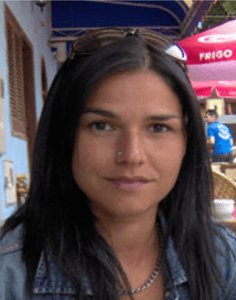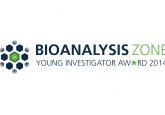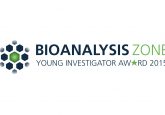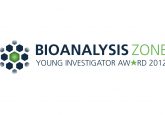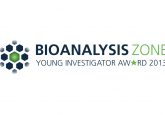2013 Young Investigator Award Nominee: Kalliope Panoutsopoulou
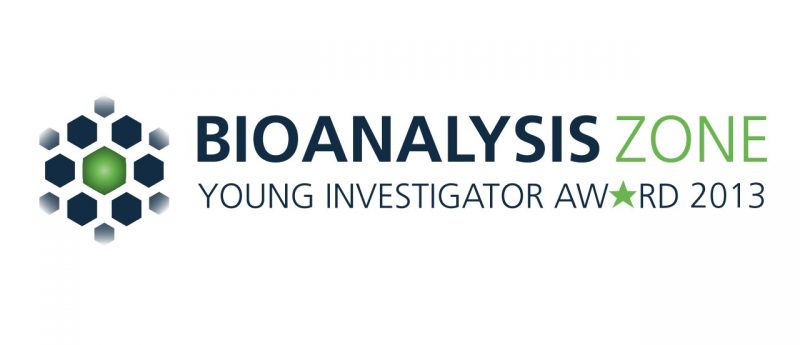
Nominee:
Nominated By:
Supporting Comments:
What drove you to choose a career in bioanalysis?
From a very young age I developed a strong fascination for science, particularly Biology and Mathematics. I moved to England to study Biochemistry and Applied Molecular Biology followed by a PhD in Yeast Genetics. Four years ago I transitioned into the field of Statistical Genetics with a goal of identifying genetic risk factors in human common complex diseases. The main driver behind my choice of career is the challenging and multidisciplinary nature of my research (combining genetics, statistics and bioinformatics for data analysis and biological interpretation) and the personal fulfilment offered by the possibility of translating my findings into the clinic.
Describe the main highlights of your bioanalytical research, and its importance to the bioanalytical community both now and in the future
I have been the lead analyst of the largest genome-wide association study (GWAS) of osteoarthritis (OA) to date, which resulted in the identification of nine genetic variants associated with the disease, bringing the total to eleven. It has been the most successful GWAS of OA to date leading to three publications in high impact journals and has been awarded oral presentations in three international symposia.
OA affects over 40% of people aged over 70 and can cause severe pain and disability. Currently there are no effective treatments leading to an increasing demand for joint replacement surgery. Three of the recently identified variants are close to strong functional candidate genes that immediately suggest clinical implications for OA. Our demonstration that OA risk loci are on the whole specific to either the hip or the knee informs the clinician that the pathophysiology of OA is likely to have joint-specific components that need to be borne in mind when developing treatment regimes. Our study also highlighted important design and analysis issues of relevance to GWAS investigations of complex diseases such as the effect of phenotype homogeneity and misclassification on power and the implications of joint specificity and sexual dimorphism in the genetics of OA.
Describe the most difficult challenge you have encountered in the laboratory and how you overcame it?
In my current role as a statistical geneticist my research is largely confined to computer-based analysis of genetic data in order to unveil the genetic aetiology of various common complex disorders. One of the most challenging and exciting aspect of my work lies in its multidisciplinary and collaborative nature that characterises cutting-edge research. My research necessitates a firm background in genetics, mathematics, statistics, bioinformatics and programming in order to be able to process efficiently the large-scale datasets that are generated by the genome-wide genotyping and next-generation sequencing approaches and to convert this information into useful biological knowledge. As the field of complex trait genetics is rapidly evolving, novel methodologies and technologies are outstripping our capacity to analyse and interpret the results obtained. In order to develop and maintain competence in the above disciplines I have been taking part in several courses, seminars and conferences amidst stand-alone reading and hands-on analysis. I am continuously seeking to be actively involved in various projects and grants that enable me to expand my analytical, project- and time-management and interdisciplinary research skills and enhance my collaborations and visibility.
Where do you see your career in bioanalysis taking you?
My future research aims to identify genetic variants that can cause initiation and progression of common complex diseases with a focus on interrogating variants from the low and rare allele frequency spectrum which have escaped detection because of previous technological limitations. The study of low frequency and rare variants has garnered significant attention over the past few years as these are expected to have higher penetrance and effect size, higher predictive value for disease development and progression, and, if in coding regions, are more amenable to designing downstream functional assays. Specifically for OA I will comprehensively examine association of low-frequency and rare variants with OA, its different clinical manifestations (joint morphology, pattern of disease and severity) and their interaction with environmental exposure. In addition, I will be analysing sequence data with respect to cardiometabolic, biochemical and hematological traits in population isolates which can enhance the power to detect association at low-frequency and rare sequence variation, because of potentially increased allele frequency and extended linkage disequilibrium. My future research will provide valuable insights into biological processes underpinning disease pathogenesis and progression. Ultimately such knowledge can lead to improving prognosis, developing efficacious treatment and tailoring intervention to the individual.
How do you envisage the field of bioanalysis evolving in the future?
Most common complex diseases are highly polygenic with variants from the whole of the allelic frequency spectrum contributing to disease risk. Greater research effort is required to detect these additional genetic influences including expansion of sample sizes through larger individual studies and meta-analyses including people of non-European ancestry; use of deep reference panels of genomic variation such as 1000 Genomes and UK 10K to enhance coverage of existing GWAS; fine-mapping studies to identify causal variants either through targeted sequencing or trans ethnic fine-mapping approaches; narrowing down phenotype definition to more precise and, where applicable, quantitative endophenotypes; whole-exome or whole-genome sequencing to identify rare and structural variants; powerful approaches to identify gene-environment interactions; and well-defined approaches for efficient translation of these findings into the clinic.
Establishing the genetic factors that predispose to disease is a crucial first step in the research pathway to develop new treatments. Extensive biological experiments will then be conducted to pinpoint the precise genes and unravel their mechanism of action. The bench-to-bedside route will only be realised through large-scale collaborations between geneticists, statisticians, bioinformaticians, clinicians and drug developers offering their specific skills and expertise to guide the process from obtaining robust genetic data into the development of effective treatments targeted to the individual.
Please list 5 of your recent publications, and select one that best highlights your career to date in the field of bioanalysis.
Panoutsopoulou K, Zeggini E, Southam L et al. Genome-wide association study for osteoarthritis: authors’ response. Lancet 381(9864), 373 (2013).
Panoutsopoulou K, Zeggini E, Southam L et al. Identification of new susceptibility loci for osteoarthritis -the arcOGEN study. Lancet 380(9844), 815–823 (2012).
Elliott KS, Chapman K, Day-Williams A et al. Evaluation of the genetic overlap between osteoarthritis with body mass index and height using genome-wide association scan data. Ann. Rheum. Dis. doi:10.1136/annrheumdis-2012-202081 (Epub ahead of print) (2012).
Day-Williams AG, Southam L, Panoutsopoulou K et al. A variant in MCF2L is associated with osteoarthritis. Am. J. Hum. Genet. 89(3) 446–450 (2011).
Panoutsopoulou K, Southam L, Elliott KS et al. Insights into the genetic architecture of osteoarthritis from stage 1 of the arcOGEN study. Ann. Rheum. Dis. 70(5), 864–867 (2011).
The selected publications represent my main involvement in deciphering the genetic aetiology of musculoskeletal diseases, particularly of osteoarthritis. Previous studies on OA have had limited success due to insufficient sample sizes and phenotype heterogeneity. As the lead analyst of the arcOGEN GWAS I have been the main driver behind the identification of nine out of the eleven OA established loci to date culminating with the publication of my work in the Lancet last year.

